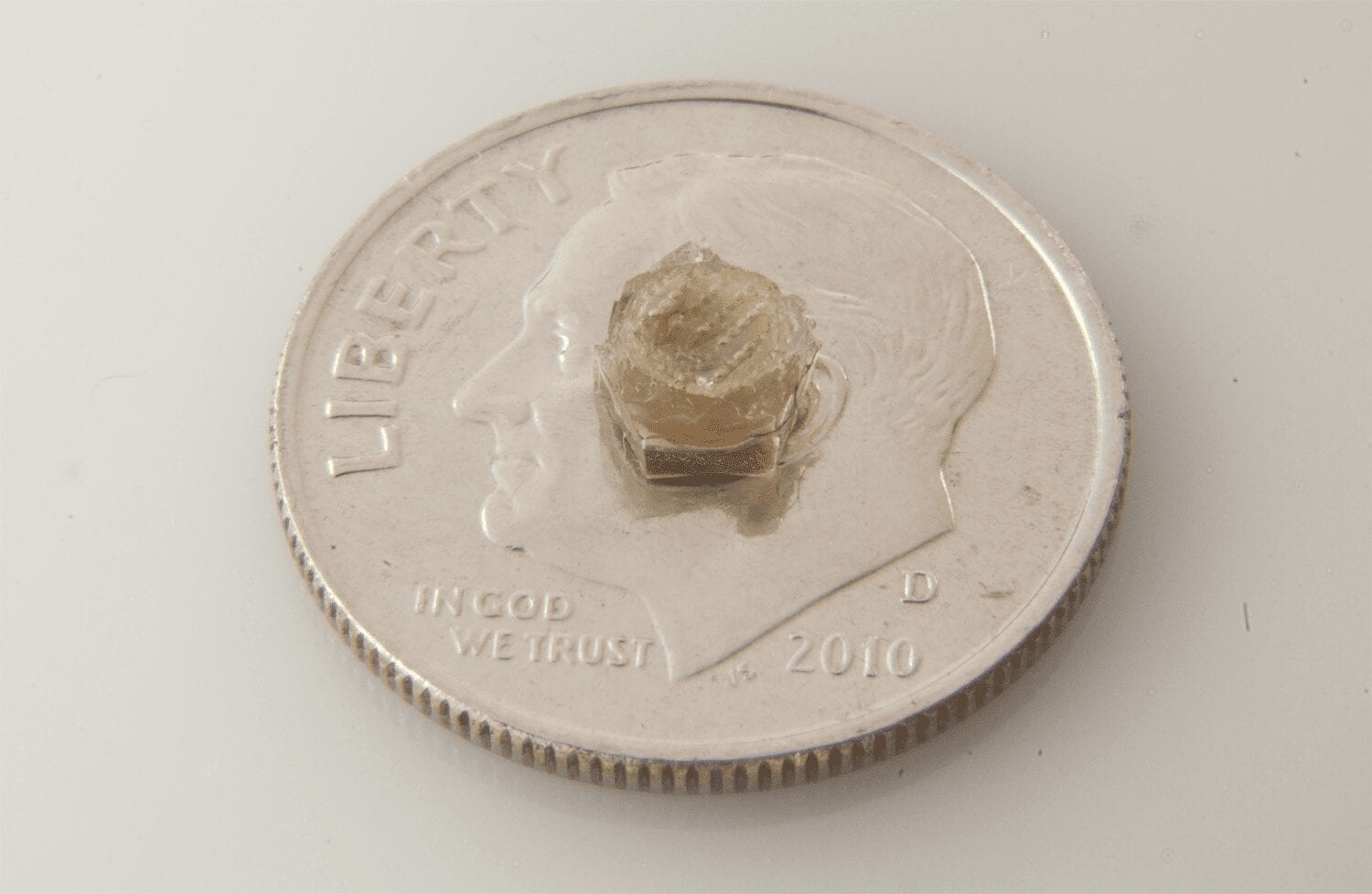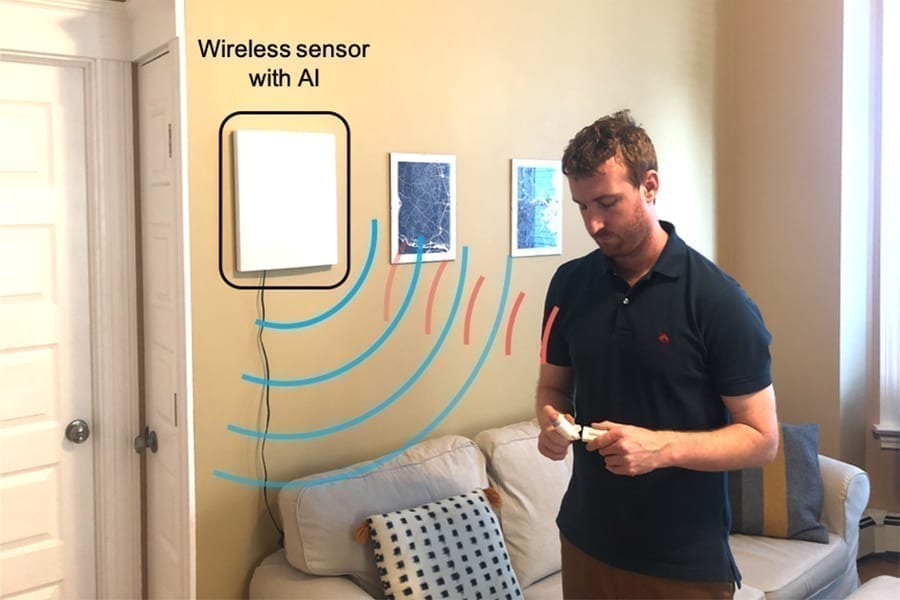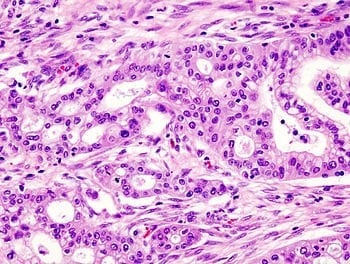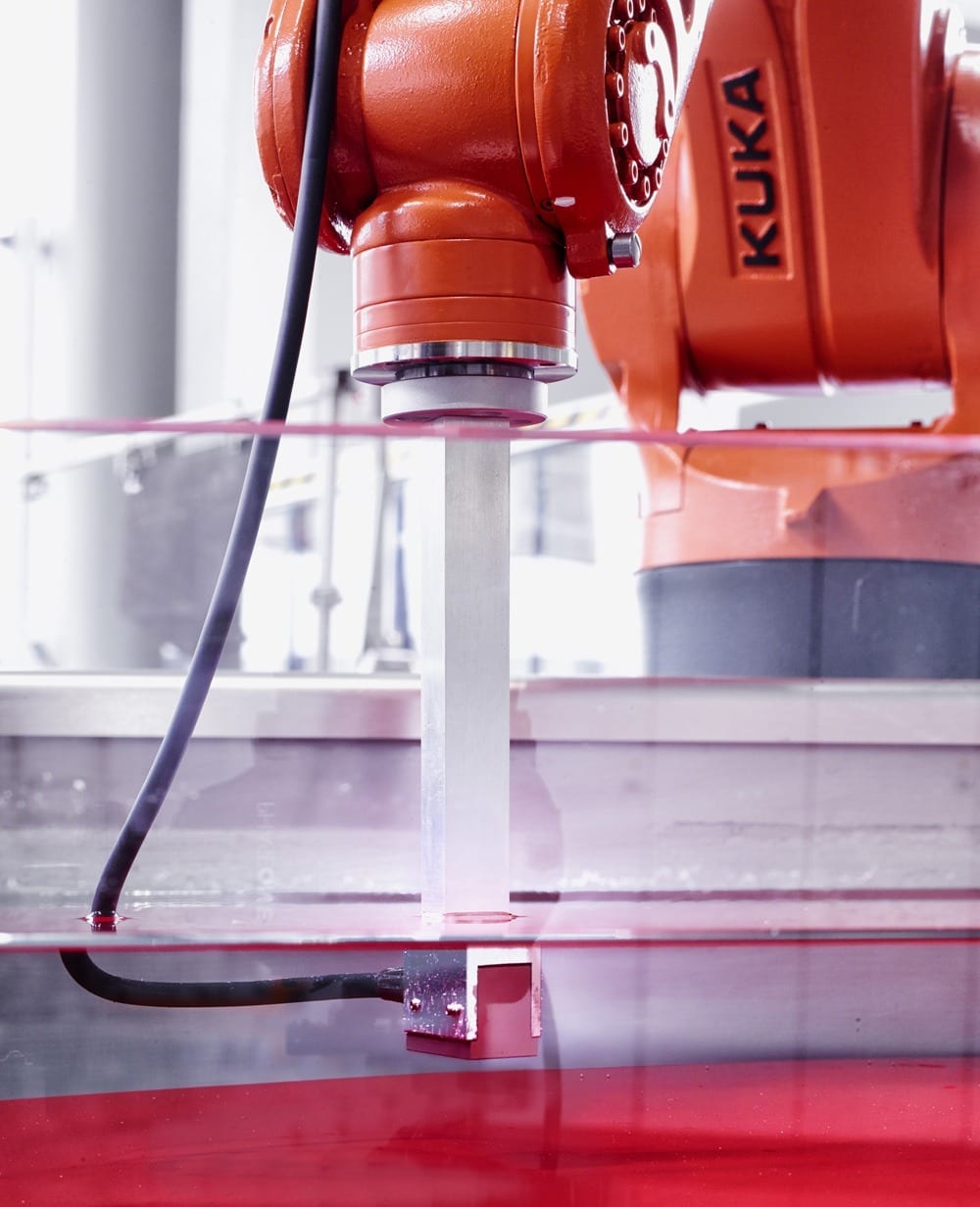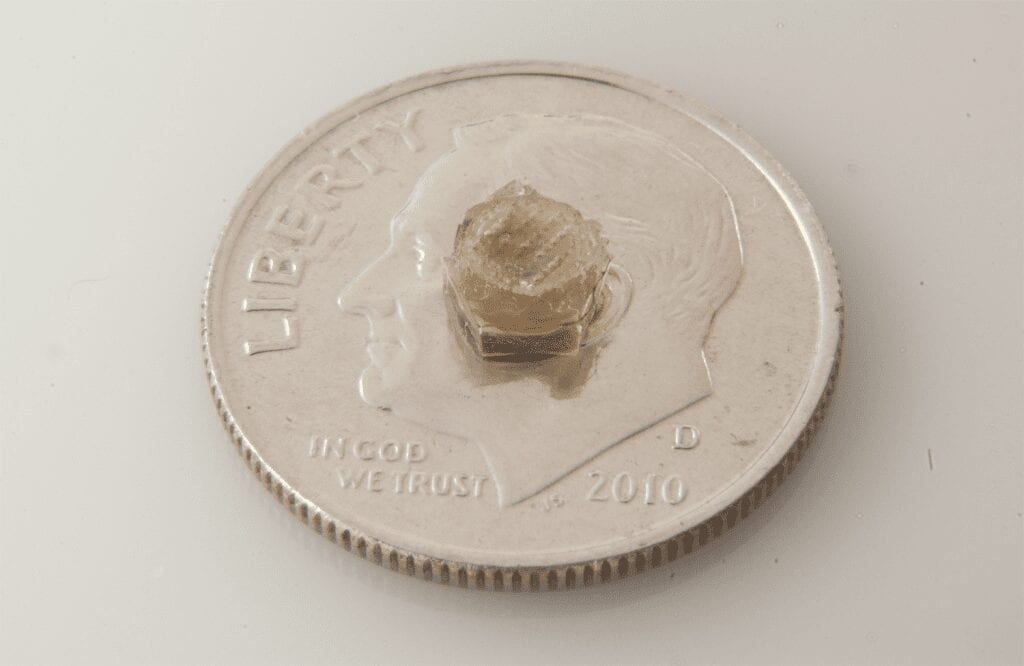
Novel technology could one day help determine optimal window for cancer treatment
The interstitial pressure inside a tumor is often remarkably high compared to normal tissues and is thought to impede the delivery of chemotherapeutic agents as well as decrease the effectiveness of radiation therapy. While medications exist that temporarily decrease tumor pressure, identifying the optimal window to initiate treatment—when tumor pressure is lowest—remains a challenge. With support from NIBIB, researchers at Purdue University have developed a novel sensor that can wirelessly relay pressure readings from inside a tumor.
Contents under Pressure
Tumors, like healthy tissues, need oxygen and nutrients to survive. In order to accommodate the demands of a growing tumor, blood vessels from surrounding tissue begin to grow into the tumor. Yet, unlike normal tissue, these newly formed blood vessels are disorganized, twisty, and leaky. It’s thought that the high pressure observed in tumors is a result of these abnormal blood vessels, which leak fluid and proteins into the area between tumor cells, known as the interstitial space.
In normal tissues, tightly regulated differences in pressure pull nutrients out of a tissue’s blood vessels and into the interstitial space, where they can be taken up by cells. Medications travelling through the blood also rely on these pressure differences in order to reach cells. When pressure in the interstitial space increases—as is the case in many tumors—medications are less apt to leave blood vessels. As a result, patients who have tumors with high interstitial pressure often receive a less than adequate dose of chemotherapy or other types of anti-cancer drugs. In addition, high interstitial pressure can also contribute to low oxygen levels in tumors. Because radiation therapy requires the presence of oxygen to be effective, tumors with high interstitial pressure are often less receptive to radiation therapy.
Window of Opportunity
Results from recent clinical trials and studies in animals suggest that a class of anti-cancer drugs called angiogenesis inhibitors may be able to temporarily reduce interstitial pressure and improve the efficacy of chemotherapy and radiation treatments. Angiogenesis inhibitors prevent the growth of new blood vessels and have long been investigated as a way to stop tumor growth. Recently, it has been hypothesized that there is a brief window after these drugs are given in which blood flow to tumors is actually normalized. This window provides an opportunity to more efficiently deliver chemotherapeutic drugs and radiation therapy.
However, because efficient methods for measuring interstitial tumor pressure are lacking, determining the optimal time to begin chemotherapy or radiation treatment within this normalization window remains a challenge.
“Right now, the only option for measuring pressure is to stick a needle inside the tumor. That’s not practical for clinical applications,” says Babak Ziaie, Ph.D, director of the Biomedical Microdevices Laboratory at Purdue University.
A Wireless Pressure Sensor
After conversations with radiation oncologists with whom he collaborates, Ziaie decided to take on the challenge of creating a tumor pressure sensor. He was enticed by the novelty of the project. “No one had done this before,” said Ziaie. “No one was working on it or even attempting it.”
Take me to the complete story . . .
The Latest on: Wireless sensor
[google_news title=”” keyword=”Wireless sensor” num_posts=”10″ blurb_length=”0″ show_thumb=”left”]
via Google News
The Latest on: Wireless sensor
- Razer Viper V3 Pro vs. Alienware Pro Wireless: Which gaming mouse is better?on April 28, 2024 at 3:00 am
The Razer Viper V3 Pro and Alienware Pro Wireless are two of the top esports gaming mice you can buy, but which one is worth your money? I tested both to find out – here are the results.
- Logitech Signature AI Edition M750 Wireless Mouseon April 27, 2024 at 11:00 am
With talk of AI being integrated into just about everything and anything in consumer tech, it's not surprising that Logitech announced a new mouse that seeks to harness the power of ChatGPT. And like ...
- The Most Innovative Wireless Earbudson April 26, 2024 at 11:41 am
The Sennheiser Momentum Sport true wireless earbuds aren’t the first to take measurements of various vitals. But they’re an interesting new design in terms of earbuds that combine audio with training ...
- Wsdcam 113dB Bike Alarm Wireless Vibration Motion Sensor Waterproof Motorcycle Alarm with Remote, Now 31% Offon April 25, 2024 at 9:18 am
The Wsdcam 113dB Bike Alarm brings an advanced level of security to two-wheeled transport. A combination of technology-ridden features, quality performance, and affordable pricing make it an ...
- Forget the PS5 Pro, Sony's neck-based air conditioner is the invention turning heads right nowon April 24, 2024 at 10:46 am
Sony's air conditioner gadget is one of the more bizarre inventions of 2024, but it's already popular in Asia - and is now available outside the continent.
- New Razer Viper V3 Pro is an esports gaming mouse with a 35K sensor that weighs just 54 gramson April 24, 2024 at 3:31 am
Razer has announced a new gaming mouse for esports and competitive gamers, the Razer Viper V3 Pro. Created in collaboration with esports pros, including recent Valorant champions, it's an ...
- The long-awaited Razer Viper V3 Pro wireless esports mouse is finally here, and it was worth the waiton April 23, 2024 at 12:00 pm
Apparently, previewing three new Razer products at GDC 2024 wasn't enough for the legendary gaming company, as the black-and-green team sent me another new Razer accessory to review for Windows ...
- This Asus Wireless Gaming Mouse Is as Cheap as Ever at $59.99on April 23, 2024 at 10:21 am
Amazon is offering a great deal on the Asus ROG Keris Wireless AimPoint with tri-mode connectivity and a super-precise 36,000 DPI sensor.
- Industrial Wireless Sensor Network Market Unlocking Niches Understanding the Importance of Market Segmentationon April 21, 2024 at 10:18 pm
The industrial wireless sensor network (IWSN) is the network of distributed sensing platform with wireless communication. IWSN is positioned in remote areas, and uses wireless technology to measure or ...
- Enjoy seamless gaming with these wireless Nintendo Switch controllers, now $30.99on April 21, 2024 at 4:00 am
Level up your gaming with these Nintendo Switch wireless controllers with RGB lights, on sale for $30.99 (reg. $42.99).
via Bing News







